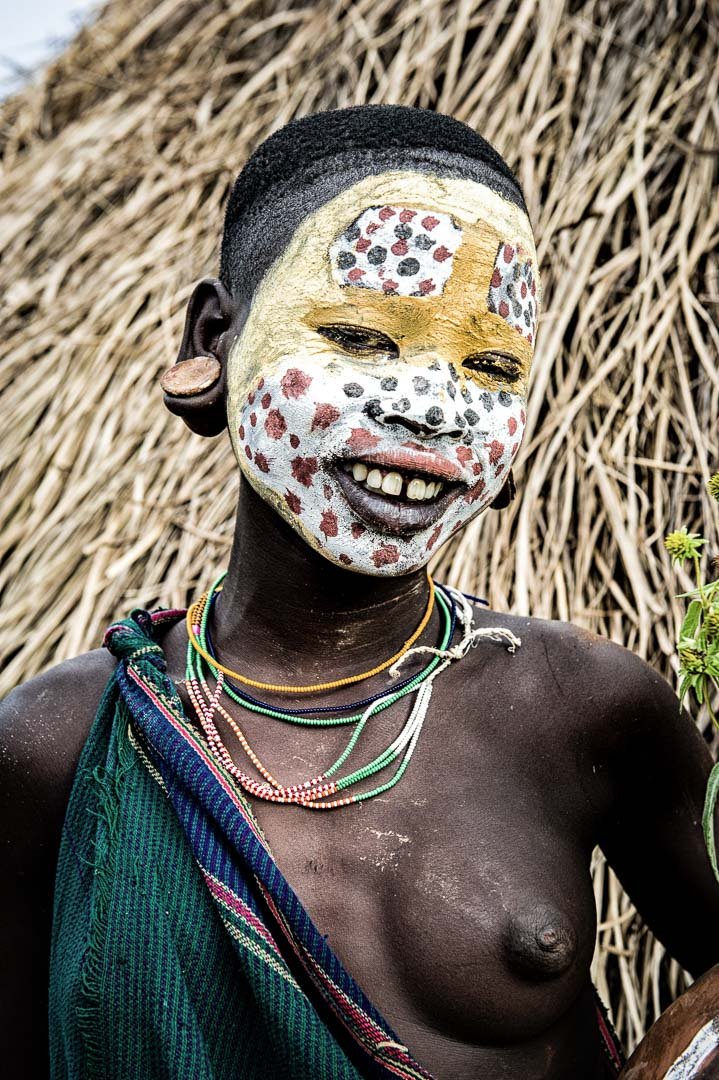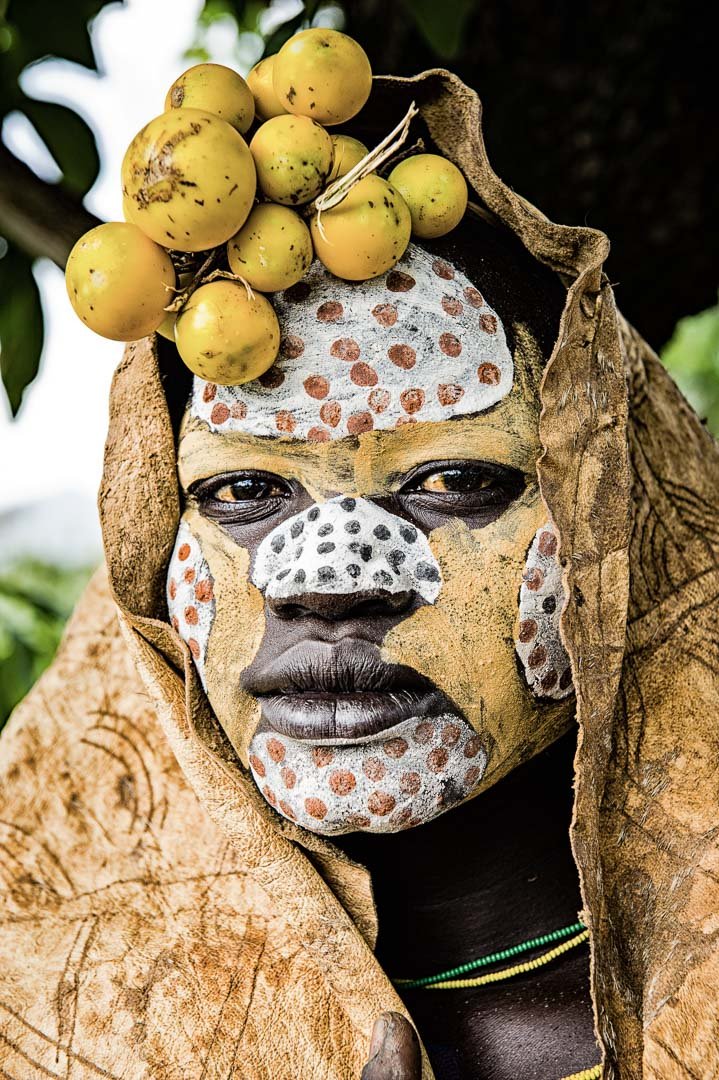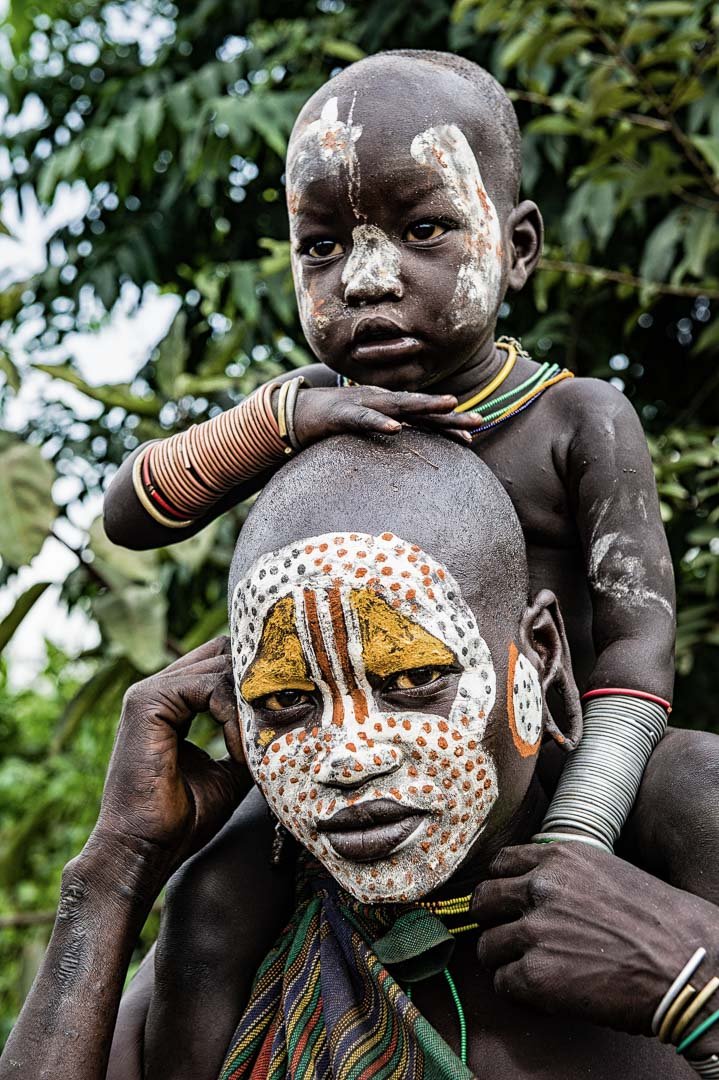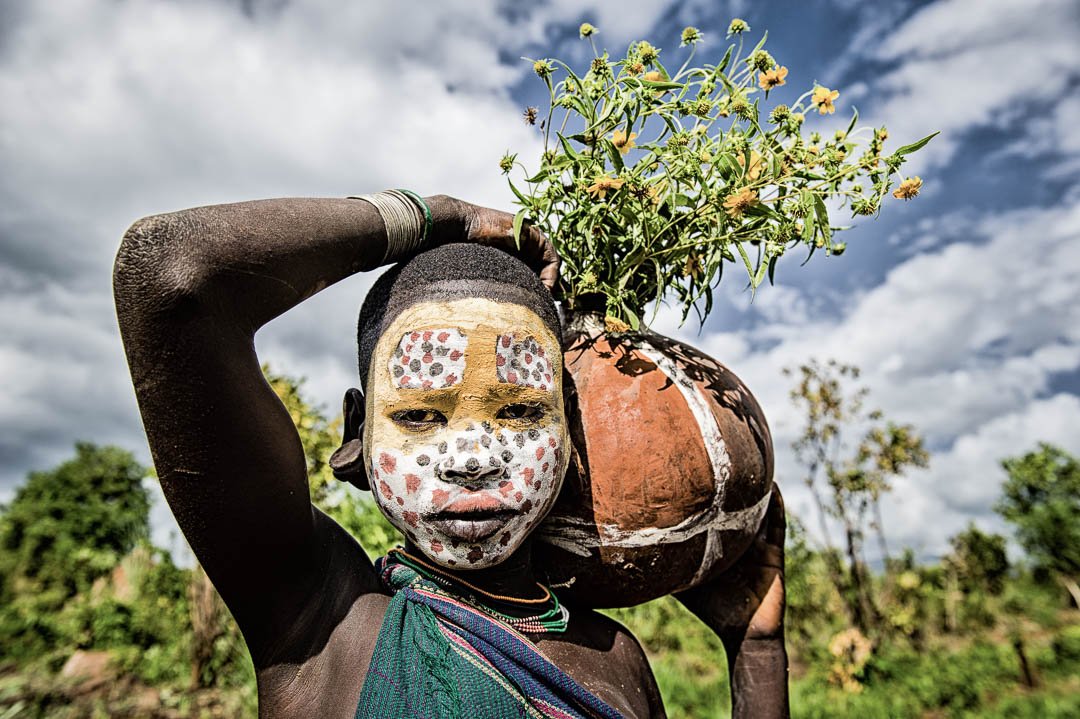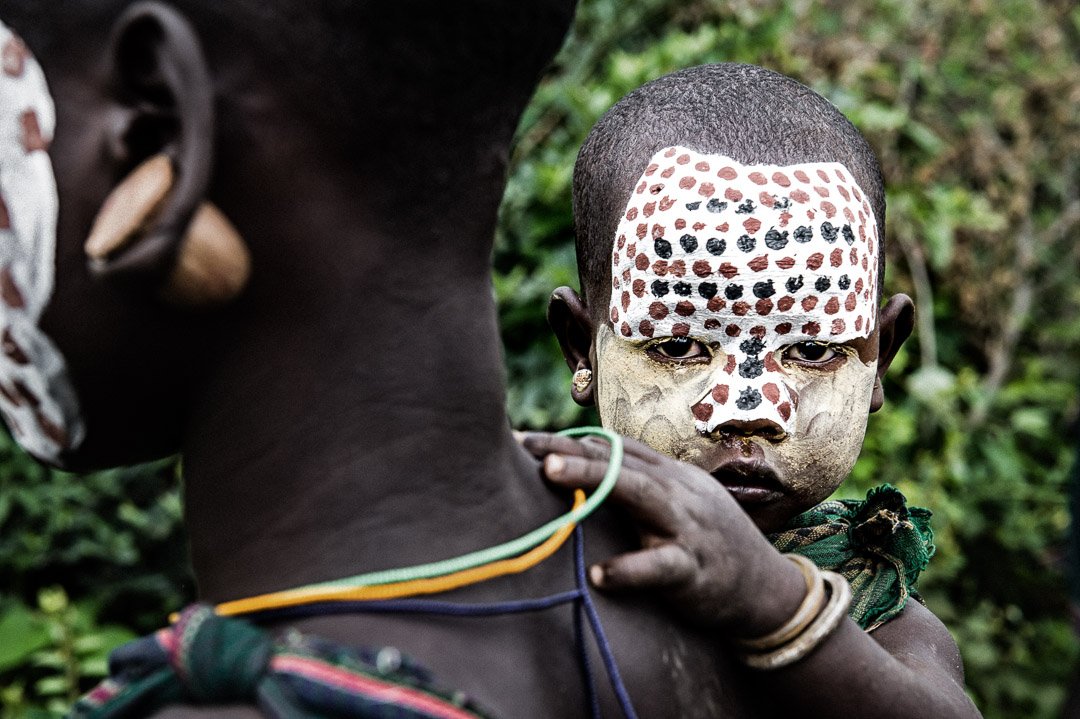The Omo Valley, in The Horn of Africa on Ethiopia’s southern border with South Sudan, is the traditional grazing lands to some of the most remote tribes on our planet.
It takes four challenging days by 4WD to reach deep into Surma territory and immediately one is confronted with the stark, naked existence of these beautiful people.
The Suri have playfully painted faces of orange, red and white made from mixtures of different earth pigments. Whilst men herd their wealth of cattle across the savanna for weeks at a time, elder women tender the fields of sorghum, corn and potatoes. Girls care for the youngest children, take great delight in shaving their heads in particular styles, craft jewelry in the form of large earrings or impractical lip plates and, like tattoos, carefully scalp scars over their bodies. The women’s visual appearance is an important part of their identity which compliments their wealth of crops that they own and barter - enabling more elaborate jewelry.
“…one is confronted with the stark, naked existence of these beautiful people”
Beneath all the beauty of culture and tradition, the Suri are being cajoled into ‘some-sort-of-civilised’ society. The Suri people ‘officially‘ form part of the Surrma collective of tribes. But no one tribe really identifies with any particular land border, let alone, any government-assigned community grouping. So, for now, the Suri communities hold onto their agro-pastrolist traditions as they struggle to negotiate adaption with their adoptive nation.
The favoured - and, of course, incentivised - ambitions of electric power for the nation and wildlife conservation of endemic species are, without doubt, important challenges and, at the best of times, difficult to balance. Unfortunately, midst the unfamiliarity of modern-time environment, the tribes of the Omo Valley are steadily being displaced.






